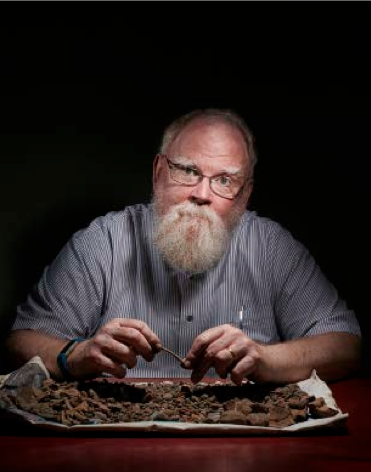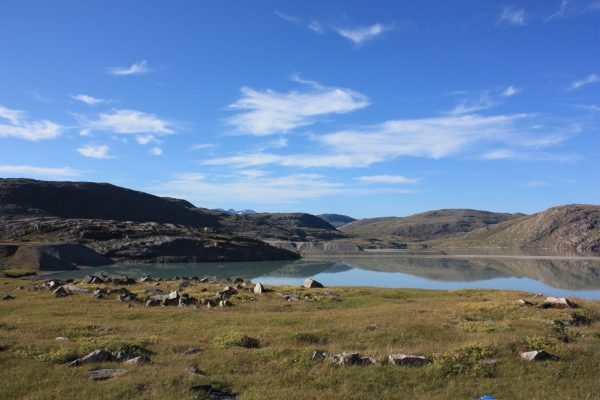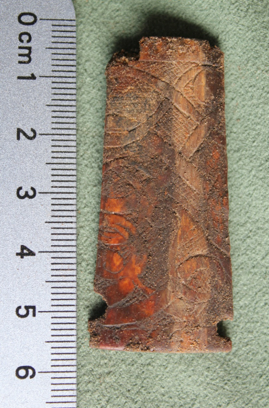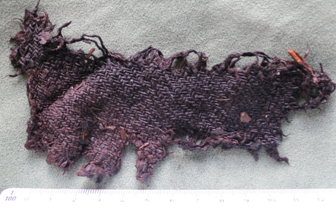When doing everything right isn't good enough
April 10, 2017
Meghan Murphy
907-474-7541

It’s a bummer of a trip when you travel thousands of miles to meet Vikings and find neither them nor any of their good beer to wash down the disappointment.
Such was the case for an enterprising Lutheran who arrived in Greenland in 1721 to convert a few thousand Vikings to his faith.
All Hans Egede found were ruins — the same ruins that Viking archaeologist Thomas McGovern would later excavate. McGovern said the Vikings' fate is scarier than anyone ever imagined.
“You can do everything right and still go extinct,” he said.
The University of Alaska Fairbanks Alaska Quaternary Center brought McGovern to Fairbanks to give a free talk on why he thinks the Greenland Vikings, or Norse, went extinct.
McGovern, a professor at the City University of New York's Hunter College, has excavated Viking sites in Greenland for the past 40 years. He said the story he now tells differs vastly from the one he once believed.
Recent studies of excavation sites, historical pollen and soils, and even plaque buildup on the Vikings’ teeth weave a tale about a people whose adaptation to a cooling climate may have ultimately led to their demise.
“It's one of those things where one adaptation which works for a while may actually make you more vulnerable to the changes happening,” he said.

But to understand the new story, he said, you must first understand the old one.
Both versions of the saga are set against a backdrop of climate change. The Vikings settled Greenland around A.D. 1000 with their livestock during a several-hundred-year anomaly of warm weather known as the Medieval Warm Period. Then the climate started cooling again in the 13th century, which would have made it challenging to grow small crops and keep livestock alive through the winter.
How the Vikings responded to this change is where the stories differ.
“The old story is that these guys are just too dumb to adapt,” he said. This version says the Vikings overharvested the land, and a cooling climate finished them off.
Lacking many historical documents from Greenland Vikings, archaeologists had looked to Iceland Vikings to see how their Greenland counterparts may have behaved. Vikings in Iceland overharvested certain areas, and the resulting erosion created moonlike landscapes. The Apollo astronauts used these areas as training grounds for walking on the moon.
But new studies in Greenland paint a much different picture. Soil samples show that the old Viking farms still had layers of peat. There were no signs of erosion.

Plaque buildup on Greenland Viking teeth through the centuries revealed that they transitioned from a dairy and farm diet to a marine mammal diet. There was also an increase of marine mammal bones in middens as the climate cooled.
This evidence indicates that the Vikings were adapting using the tool they knew best — their longships, said McGovern. They took to the sea to hunt seals. They were already accomplished walrus hunters as they hunted the animals for their ivory — a prized trade good.
But while hunting on the seas may have initially helped them, it could have hurt them because the cooling climate generated dangerous storms.
“All marine hunter-gatherers, including folks in Alaska, suffer terrible loss of life at sea,” said McGovern.
If the best hunters from a several-thousand-strong Viking colony lost their lives at sea over time, then the community left behind might dwindle to nothing.
Sadly, the last thing ever heard from the Greenland Vikings was a letter celebrating a life about to begin — a wedding in 1408. Physical evidence indicates that the Vikings disappeared later that century. That’s when the forests started to grow back in some of the settled areas, according to soil records.

But could the Vikings have possibly packed up their belongings and left in their longships for a new life?
McGovern doesn’t think so, at least not on a large scale. He said nobody may notice 1,000 Vikings leaving, but they sure would notice them showing up. Their exodus would have meant the abandonment of the westernmost bastion of Catholicism. At the time, its reach was shrinking and the subject of almost every fiery sermon across Europe.
“If people then had been given another example of Christian abandonment from Greenland, my heavens, that would have been stuff that they would have used in sermons,” he said.
But it was never mentioned. Popes kept appointing ambassadors to Greenland for 200 years after the Vikings disappeared, even though these ambassadors never left Italy.
It was Lutheran missionary Hans Egede who finally travelled by sea to set foot on Greenland in the 18th century to find the Vikings. But no oil lamps lit dark chambers. No longships, so iconic of the Vikings, entered or departed the fjords. It was just ruins … and no beer.


